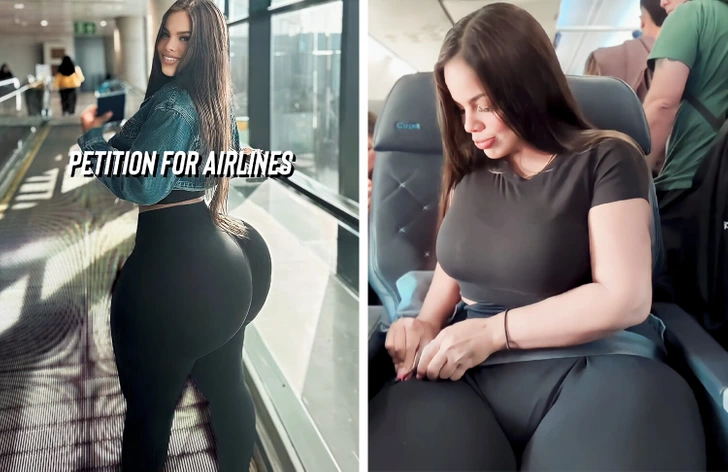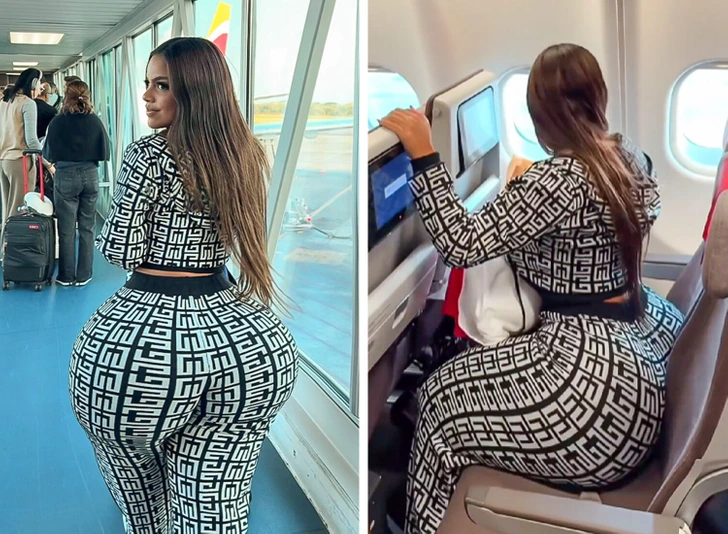Air travel has long been a topic of debate when it comes to passenger comfort, but a recent viral video has reignited discussions about the need for wider airline seats. Social media influencer Gracie Bon, a 26-year-old from Panama, took to Instagram to share her frustration about the lack of accommodation for plus-sized travelers. Her call for airlines to rethink their seat designs has sparked both support and criticism, highlighting a larger conversation about body diversity and travel accessibility.

The Viral Video That Started It All
In her now-viral Instagram post, Gracie Bon documented her struggle to fit comfortably in her airplane seat, despite flying first class. She expressed frustration while attempting to fasten her seatbelt, a challenge many plus-sized passengers face. Later in the video, she confidently walked through the airport, showcasing her curves and emphasizing her point: “Airplanes should have bigger seats.”
Gracie further explained her predicament, stating:
“So today I had a flight, and even if I was flying in first class, I couldn’t fit on the airplane—so this is a petition for all airlines so big girls like me can fly.”
Her plea for change resonated with many, but it also drew criticism, igniting a fiery online debate.
The Internet’s Divided Response
As expected, opinions on the matter varied. Many of Gracie’s followers supported her stance, arguing that airlines should adapt to changing body sizes. One supporter commented:
“Agreed. I definitely need a larger seat and a seatbelt that doesn’t have such a hard buckle.”
Others defended Gracie against accusations regarding her body, pointing out that not all plus-sized individuals have undergone cosmetic procedures.
On the flip side, critics were quick to express their opposing views. Some argued that passengers should take responsibility for their own body sizes rather than expect airlines to accommodate them. One harsh comment read:
“Buy two seats instead of one; clearly, you’ve got plenty of money to afford them.”
Another remarked:
“Whose fault is it? No one forced you to undergo surgeries.”
Despite the mixed reactions, Gracie remained firm in her stance, later posting another video reiterating: “It’s 2024, bodies are changing, so planes should too.”
The Growing Need for More Inclusive Airline Policies
The debate sparked by Gracie Bon’s post is not new. Over the years, plus-sized travelers have voiced concerns about airline policies that fail to accommodate diverse body types. Some common complaints include:
- Narrow seats that make flights uncomfortable for larger passengers.
- Short seat belts that require some travelers to request extensions.
- Minimal legroom, which can be a struggle even for people of average size.
- Overhead bins and aisles that are not designed with larger passengers in mind.
While some airlines offer seatbelt extenders and allow passengers to purchase additional seats, these solutions do not address the root issue: the lack of inclusivity in airline seating design.

Should Airlines Redesign Their Seats?
As body diversity becomes more recognized, should airlines rethink their approach to seating? Some advocates argue that airlines should increase seat width to reflect the changing body sizes of passengers.
However, this change would come with challenges. Airlines operate on profit margins that rely on fitting a certain number of passengers per flight. Making seats wider would mean reducing the number of seats per plane, potentially leading to:
- Higher ticket prices due to fewer available seats.
- More expensive flights for all travelers, including those who do not require extra space.
- Redesigned aircrafts, which could take years to implement.
Despite these challenges, some airlines have started making small changes. A few have introduced extra-wide seats for economy passengers, but they often come at an additional cost. Others provide plus-size friendly policies, such as allowing customers to purchase a second seat at a discounted rate.

The Reality of Air Travel in 2024
Gracie Bon’s viral moment sheds light on a broader issue: modern air travel doesn’t always accommodate real people and their evolving body types. While airlines have taken steps toward better accessibility, more needs to be done to ensure that all passengers can fly comfortably without discrimination.
That said, there is no one-size-fits-all solution. Some believe the responsibility lies with passengers to adjust to existing travel conditions, while others insist that airlines must modernize to meet the needs of today’s travelers.

Final Thoughts
As body inclusivity conversations grow, airlines are facing increasing pressure to rethink their seating arrangements. While changes won’t happen overnight, Gracie Bon’s message has amplified a conversation that won’t be going away anytime soon.
So, what do you think? Should airlines adjust their seats to accommodate larger body types, or should passengers adapt to current travel standards?

Let the debate continue.